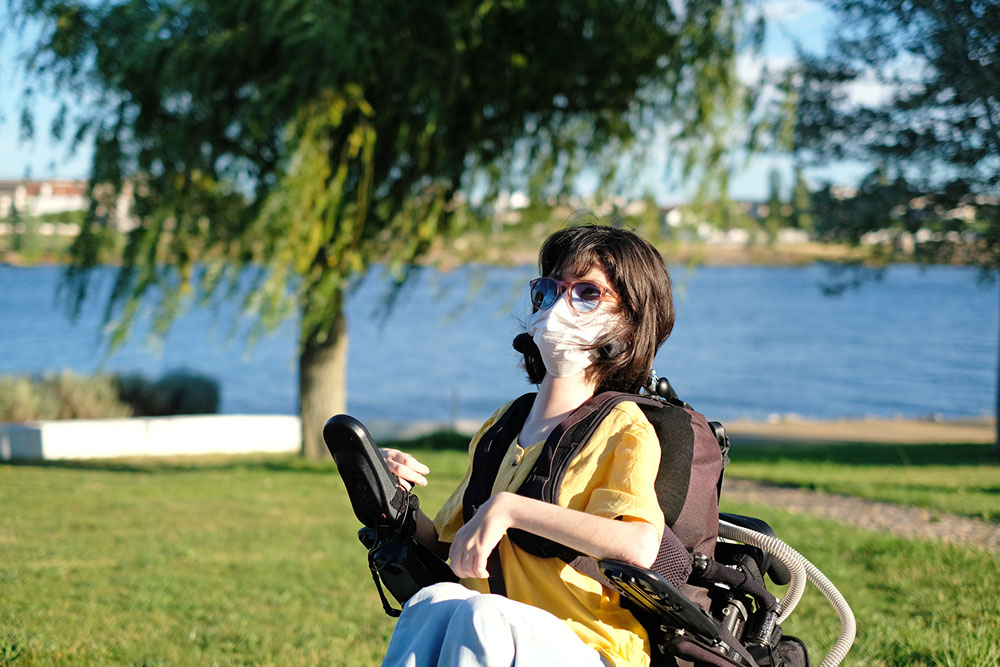Early warning signs of 6 types of muscular dystrophy

Muscular dystrophy refers to more than 30 types of genetic disorders that may damage or weaken muscles over time. It generally occurs due to a deficiency of the protein “dystrophin,” which is crucial for muscle function. The signs and symptoms may vary depending on the type of MD, condition, and its severity in every affected individual. This article aims to identify six types of muscular dystrophy disorders and their early warning signs.
Duchenne Muscular Dystrophy (DMD)
DMD is one of the most common and chronic types of muscular dystrophy. Its onset typically occurs in early childhood, between the ages of 2 and 3. The condition typically affects boys, although there have been rare occurrences among girls as well. Due to its severity, people living with this health condition tend to have a shorter life expectancy. Common symptoms of DMD include:
- Trouble walking, running, or jumping
- Loss of reflexes
- Difficulty standing up
- Poor posture
- Waddling gait
- Bone thinning
- Abnormal curvature of the spine (scoliosis)
- Learning differences
- Delayed growth
- Breathing difficulties
- Difficulty swallowing
- Lung and heart weakness
Becker Muscular Dystrophy (BMD)
BMD is a rare genetic disorder that causes muscle weakness and degeneration over time. Symptoms generally begin to develop between the ages of 5 and 15. Men are at the highest risk of inheriting this condition. Symptoms may include:
- Muscle weakness (generally in the arms and legs)
- Walking on the toes
- Frequent falls
- Muscle cramps
- Trouble getting up from the floor
- Difficulty walking up the stairs
- Low tolerance for exercise
- Fatigue
- Loss of balance and coordination
Congenital muscular dystrophy (CMD)
Congenital muscular dystrophy is a genetic muscle disorder that affects one right from birth or develops in the early stages of infancy. It is typically attributed to the loss of glycoproteins that impact muscle function and their ability to repair damage.
Those with congenital muscular dystrophy may experience symptoms such as:
- Low levels of spontaneous movement (kicking or waving)
- Low muscle tone (hypotonia)
- Muscle weakness
- Poor muscle control
- Inability to sit or stand without support
- Scoliosis
- Foot deformities
- Trouble swallowing
- Respiratory problems
- Vision problems
- Speech problems
- Learning differences
Myotonic dystrophy
Myotonic dystrophy leads to progressive muscle weakness and wasting. Not only can this condition affect muscle movement, but it may also impact electrical activity in the heart. In some cases, it may also lead to diabetes, hormonal changes, reproductive problems, or tumor growth. The most commonly noticed symptoms of myotonic dystrophy include:
- Drooping muscles in the face
- Difficulty lifting the neck (due to weakened muscles)
- Difficulty swallowing (dysphagia)
- Droopy eyelids
- Early balding (receding hairline)
- Cataracts
- Slow and irregular heartbeat (cardiac arrhythmia)
- Increased sweating
- Slurred speech
- Bowel problems (like diarrhea, constipation, or incontinence)
- Behavioral problems
- Excessive sleepiness and tiredness
Facioscapulohumeral muscular dystrophy (FSHD)
This genetic disorder affects the muscles of the face, shoulder blades, and upper arms. According to research, most cases of FSHD result from genetic mutations of the double homeobox protein four gene ( DUX4 ). Symptoms of this condition usually begin before the age of 20. While the condition progresses slowly, symptom severity may be highly variable among patients. Symptoms of FSHD may include:
- Difficulty chewing or swallowing
- Slanted shoulders
- The crooked appearance of the mouth
- Shoulder blades begin to appear wing-like
- Abdominal muscle weakness
- Facial weakness (making it difficult to smile or sip from a straw)
- Mild hearing loss
- Pain and inflammation
- Weakness in the lower legs
Oculopharyngeal muscular dystrophy (OPMD)
This rare genetic condition affects people of all genders. It causes muscle weakness around the eyelids and the throat, affecting vision, swallowing, and talking. Over time, this weakness may also extend to the neck and shoulders. Symptoms generally begin to show between the ages of 40 and 60. Some symptoms of OPMD include:
- Drooping eyelids
- Vision problems
- Trouble swallowing (dysphagia)
- Voice changes
- Heart problems
- Difficulty walking
- Tongue shrinking
- Pooling of saliva
- Weakness in the legs and arms
Muscular dystrophy affects every person differently. Complications also depend on the type and severity of the disorder. There is no cure for these conditions. However, early diagnosis may help manage symptoms and slow the progression of the disease. Diagnostic tests may include blood testing, genetic testing, electromyography, neurological physical exam, muscle biopsy, cardiac testing, MRIs, ultrasounds, and exercise assessments.
Once diagnosed, treatment is aimed at symptom management and may include physical, respiratory, speech, and/or occupational therapy, assisted ventilation, or surgery.



